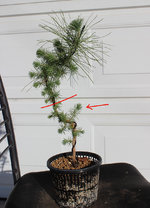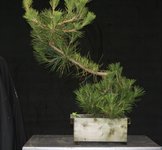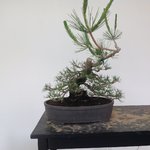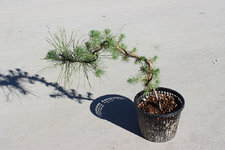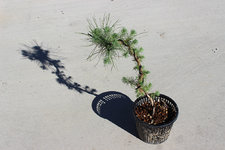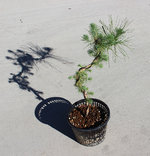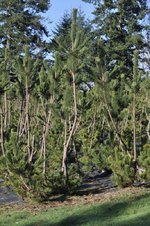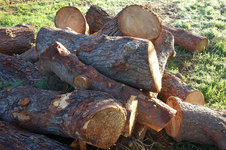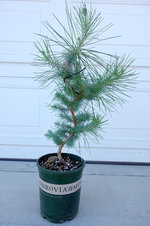Hi everyone,
I've been dabbling in bonsai for a couple years now, watching lots of videos on Youtube, and butchering $10 nanas for practice. Wanting to start getting feedback on some of my slightly better bargain finds, I joined the local bonsai club...right before Covid hit so I was able to attend a total of one meeting before they were canceled.
Anyway, with Spring looming, I'm eager to get some input on a few projects, so I'm happy to have found this community. I know it's harder to give styling advice from pictures, but it's better than nothing! Anyway, I thought I'd start off with an easier one.
Anyway, I thought I'd start off with an easier one.
I rescued this (95% sure it's an Aleppo) pine seedling from a roadside foot path about 16 months ago. It was 1.5" then. Now it's 12". It really went nuts after being planted in akadama/pumice and getting a mychoriza dose. In fact, it grew so fast that I missed wiring in some really tight bends when it was still super flexible.
It's still fairly pliable, and as you can see I've got wire on it now. I could probably crank it really hard without doing too much damage, but I'm wondering if I should cut it down instead and try to grow out a new leader to generate some taper. A new leader would give it a nice 90 degree kink, but wonder if the taper would ultimately be 'lost' or become indiscernible in such young material with only a year's growth in difference. If I want taper, should I wait another year until there's even more size difference? Should I thin the top to encourage the lower branches to stay healthy?
I know zilch about pines, so I'm looking for advice. Thanks!
I've been dabbling in bonsai for a couple years now, watching lots of videos on Youtube, and butchering $10 nanas for practice. Wanting to start getting feedback on some of my slightly better bargain finds, I joined the local bonsai club...right before Covid hit so I was able to attend a total of one meeting before they were canceled.
Anyway, with Spring looming, I'm eager to get some input on a few projects, so I'm happy to have found this community. I know it's harder to give styling advice from pictures, but it's better than nothing!
I rescued this (95% sure it's an Aleppo) pine seedling from a roadside foot path about 16 months ago. It was 1.5" then. Now it's 12". It really went nuts after being planted in akadama/pumice and getting a mychoriza dose. In fact, it grew so fast that I missed wiring in some really tight bends when it was still super flexible.
It's still fairly pliable, and as you can see I've got wire on it now. I could probably crank it really hard without doing too much damage, but I'm wondering if I should cut it down instead and try to grow out a new leader to generate some taper. A new leader would give it a nice 90 degree kink, but wonder if the taper would ultimately be 'lost' or become indiscernible in such young material with only a year's growth in difference. If I want taper, should I wait another year until there's even more size difference? Should I thin the top to encourage the lower branches to stay healthy?
I know zilch about pines, so I'm looking for advice. Thanks!

